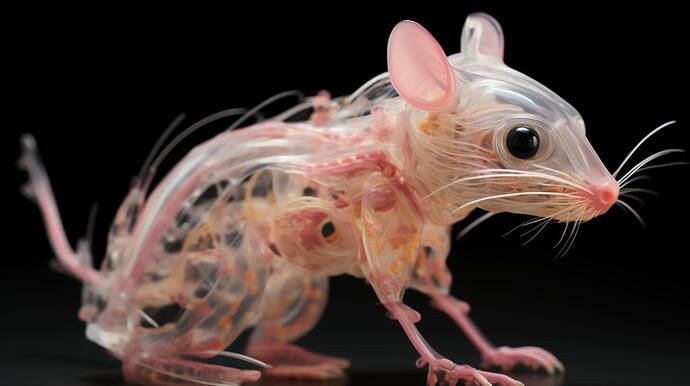Summary
For many decades, scientists have been causing lab animals to develop autoimmune disease so that it can be studied. There’s an eerie resemblance between what they see in lab mice and what chronic illness patients are seeing from their self-experimentation.
- What helps autoimmunity in one situation can do the opposite in other situations.
- Antimicrobials, infections, and immune suppressing drugs do things. Sometimes they are beneficial and sometimes they are harmful.
Patients have already tried many of the drugs tested in animal models. However, there are some drugs that haven’t been tried. Because I’m not a fan of reckless medical experimentation, I will point out that some of the treatment candidates are fairly reasonable because they have a track record of being used in humans (e.g. in folk medicine).
The ‘double edged sword’ effect
If you want to go deep into the science, just watch my 35 minute video and read some of the links in the presentation slides (in the video description). I’ll summarize the key points.
For some drugs, you can find studies showing that it helps in one animal model of autoimmunity and another study that shows that it hurts in a different animal model. This is the case for:
- Antibiotics
- Raising the animals in a pathogen-free environment (but obviously human patients can’t go back in time)
- Tilorone
- NAC (N-acetyl cysteine)
- Infections
I suspect that the list would be much longer if researchers published all of their research. Unfortunately, the research world places a lot of pressure on researchers to publish sexy findings so that they can get research funding and not lose their jobs. So that may explain why most interventions work- researchers simply aren’t publishing research that goes against their original hypothesis (proposed theory about how things are supposed to work).
For chronic illness sufferers, there are some actions that will likely protect patients against the double edged sword effect:
- Discontinue treatment if it’s going the wrong way.
- Start with low doses.
We haven’t definitively proven that those strategies are better. However, it would be prudent to follow them because the data is leaning (strongly) that way.
Intentional infections
There are many, many studies where scientists will infect animals with diseases (e.g. malaria) before trying to make them develop autoimmune disease.
For chronic illness, there is very little data because infections aren’t popular. Patients haven’t done much experimentation with parasites, malaria, ?medical leeches?, tapeworm, etc.
There is a Nobel prize winning drug called malaria. Yes, malaria.
Specifically, the Plasmodium vivax species was used (it’s less dangerous than Plasmodium falciparum). It was used to treat syphilis- a chronic illness that would progressively get worse over years. Nowadays, nobody uses P. Vivax it for syphilis because penicillin and other antibiotics are better. But it did see some mainstream use in medicine.
Nowadays, the most popular intentional infection is the live attenuated vaccine. Pathogens are weakened (‘attenuated’) by breeding them to be weaker. Then they are injected into the patient. BCG is perhaps the most popular live attenuated vaccine that chronic illness patients have been trying, but it is not popular. I don’t think that it is reversible so I wouldn’t recommend experimenting with it. So let’s talk about more reasonable experimental treatments…
Repurposed drugs that aren’t popular
See the slides for my video on The Connection Between Vaccine Injury, Long COVID, and ME/CFS.
Tilorone - see this post for a primer on tilorone. This is sold over the counter in Russia, Ukraine, and ex Soviet bloc countries.
t-Butylhydroxyanisole / BHA (food ingredient) - I haven’t had time to look at the dosage used in Mohamed and colleagues (PMID: 12085664) or Stosic-Grujicic and colleagues (DOI:10.1016/j.jaut.2004.01.005)
Truvada (Emtricitabine / Tenofovir) - No idea how safe/risky this is but it is commonly used to prevent HIV infections.
Essential oil from pterodon emarginatus (Vogel) seeds - This is used as folk medicine in South America. Brazilian online retailers sell the essential oil (e.g.laszlo.com.br, mercadeolivre.com.br). It’s also sold on Ebay I believe.
Interferons - They haven’t been that popular in chronic illness communities except in ME/CFS.
Ribavirin - This is a prescription antiviral with black box warnings.
Tranexamic acid - This is an OTC drug in the UK, a prescription drug elsewhere. Used to prevent blood loss. It’s sort of the opposite of the anticoag drugs. I’ve tried this drug; it was only mildly bad.
Normal, reasonably safe antimicrobial drugs that haven’t been that popular
- Hydroxychloroquine
- Monolaurin (same thing as Lauricidin)
- Fluconazole and some other azole antifungals like albendazole
- Nitazoxanide
- Valtrex / Valaciclovir
- Valcyte / Valganciclovir (This is surprisingly expensive)
- Aciclovir
- Probably many other prescrption drugs
- Many of the drugs listed in this iHerb shopping list like lavender essential oil, artemisinin, oil of oregano, etc.
- ??? Essential oils that taste good and are used in food - cinnamon bark, orange, oregano, spearmint (*cinnamon bark is extremely potent and causes chemical burns - be careful!!!)
- Some of the antimicrobials listed in my protocol video.
Be very careful about traditional antibiotics like the cillins, mycins, etc. On average, they seem to cause more harm than good. (And probably avoid the ‘flox’ antibiotics as they are unnecessarily dangerous.)
I haven’t had time to see if those drugs have been tested on animal models of autoimmunity. To find the studies, do a Google search for “experimental autoimmune” plus the name of the drug. Most of the animal model studies will have a phrase like experimental autoimmune encephalomyelitis.
Immune suppression
I’m not a fan of these drugs because they are high risk and the results have been quite mediocre so far. While people have seen dramatic recovery, nobody on the Treatment Outcomes survey reported dramatic recovery from immune suppression (except for maybe colchicine and there’s a small chance that the macrolide used was rapamycin). They have been outclassed by a supermarket food (black seed oil).
But I will try to put my bias aside and I will point out that they are discussed in the scientific literature. There has been a lot of research on immunosuppressants in animal models.
Recap
The literature on autoimmune disease suggests that there are many reasonable drugs/treatments that people can try. Lavender supplements and the random Brazilian essential oil (from pterodon emarginatus Vogel seeds) aren’t that crazy because they have seen a lot of use in humans.
The animal models also tells us what we already know - HBOT helps some people.
And if you look through the survey data, it’s clear that response rates for treatment are low. So I really don’t expect to discover any magic cures or miracle treatments from the scientific literature on autoimmune disease. We’re just going to find more ivermectins, hydroxychloroquines, statins, HBOTs, etc. And if we discover more, that’ll be great because not everybody will respond to the current known treatments.
I hope this helps. Please don’t do anything too crazy.

